What’s the Truth About the Tiptronic in the Air-Cooled Porsche 911 (964C2)?
公開日:2018.12.10
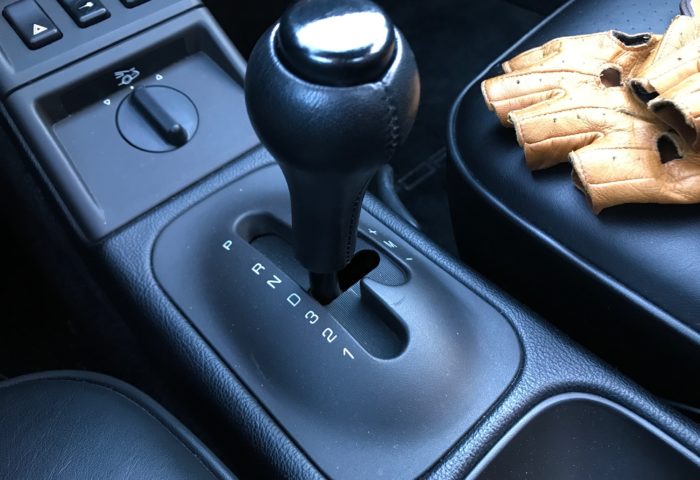
Manual or Tiptronic?
When my husband was deciding on his 911 (964C2), he was torn between “manual transmission or Tiptronic?” In the end, he chose the Tiptronic.
At first, he considered a manual, but well-maintained manuals were rare, and those available were either outrageously expensive or had some kind of modification. Since he wanted a completely original condition car, he found several Tiptronic models with excellent, nearly complete maintenance records and clear provenance, all within an acceptable price range.
Also, since most air-cooled Porsche articles and blogs focus on manuals, he thought “it would be interesting to buy a Tiptronic and share information about it.” Plus, he can enjoy Porsche manuals with his Boxster GTS, so this time he went with the Tiptronic.
So, recently he put together a report on his impressions of the Tiptronic as it stands now, and today I’d like to share that with you.
Here are his thoughts
For anyone considering a 964 or 993, the biggest question is probably “manual or Tiptronic?” I was very torn too, but for this 964, I went with the Tiptronic.
According to the documents I have, this car’s Tiptronic was jointly developed by ZF (gearbox), Bosch (electronics), and Porsche, and it apparently “has five modes and automatically switches between them based on throttle position and other factors.” It also considers lateral G-forces to prevent unnecessary upshifts in corners.
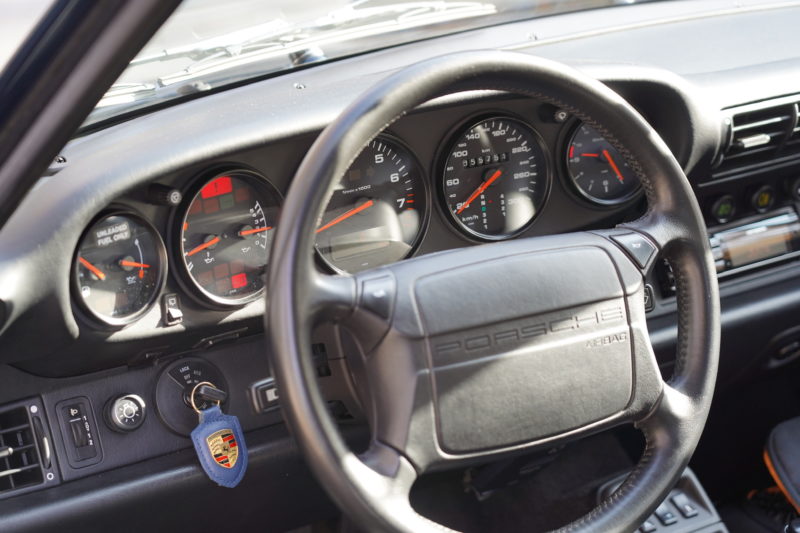
① Shift Shock
When driving normally in D range around town, the shift shock is extremely minimal. In D range, it starts in 2nd gear as an automatic transmission, but there’s virtually no noticeable shock—it’s hard to believe this is an AT from nearly 30 years ago. The automatic transmissions I knew back then (only Japanese cars, admittedly) had big shift shocks that made the car lurch forward and backward with every gear change, but the Tiptronic is remarkably smooth.
If you deliberately start in 1st gear and ease off the accelerator just before shifting to 2nd, you might feel a slight shock, but otherwise it’s very smooth. Even then, the shock isn’t unpleasant; I’d say it’s about the same as what you’d get with a skilled driver on a manual transmission. If you pay close attention, when the lock-up clutch engages, the engine speed drops slightly, and when it disengages, there’s a small “clunk” vibration—but this only happens if the throttle and lock-up timing are off, and you wouldn’t notice it unless you were looking for it.
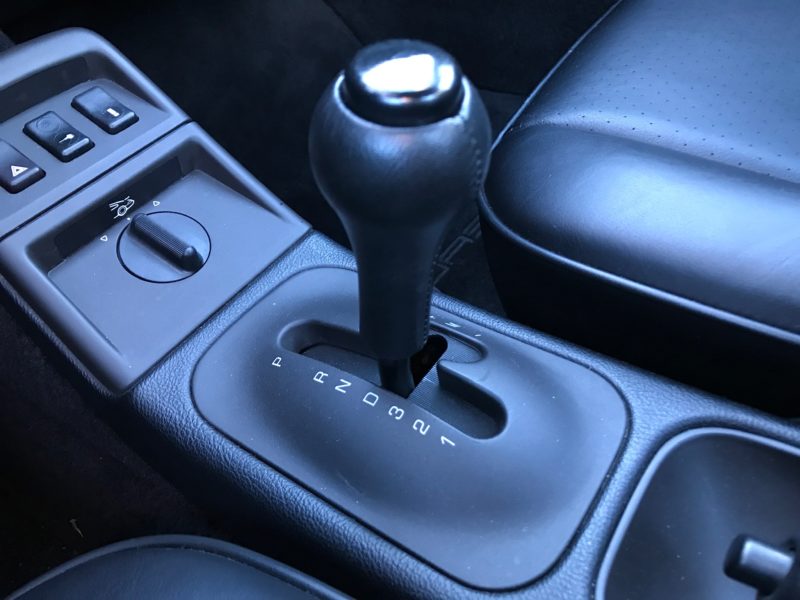
The maintenance records show the AT fluid was changed twice in the past, so the good condition might contribute to this, but even so, I think it’s a very good automatic transmission.
② Manual Shifting
I tried shifting manually by pushing the lever to the right. Compared to D mode, the lock-up clutch engages at a slightly lower RPM and feels more direct. When accelerating briskly in 2nd gear around 1800-2000 rpm, the lock-up engages more directly than in D range, causing the engine speed to drop briefly and giving a sensation similar to a gear change. Pushing the lever forward (+ direction) shifts into 3rd gear. The shift speed isn’t lightning fast, but it’s not slow either.
It can’t match the speed of modern ATs or PDKs, but it’s definitely not the slow, two-step delayed shifting typical of old automatics.
For example, when driving at a reasonable speed in 3rd gear on a public road and approaching a corner, you brake before the corner and downshift manually to 2nd. With a slow-shifting AT, the shift might only start after you’ve already entered the corner, but with the Tiptronic, that doesn’t happen.
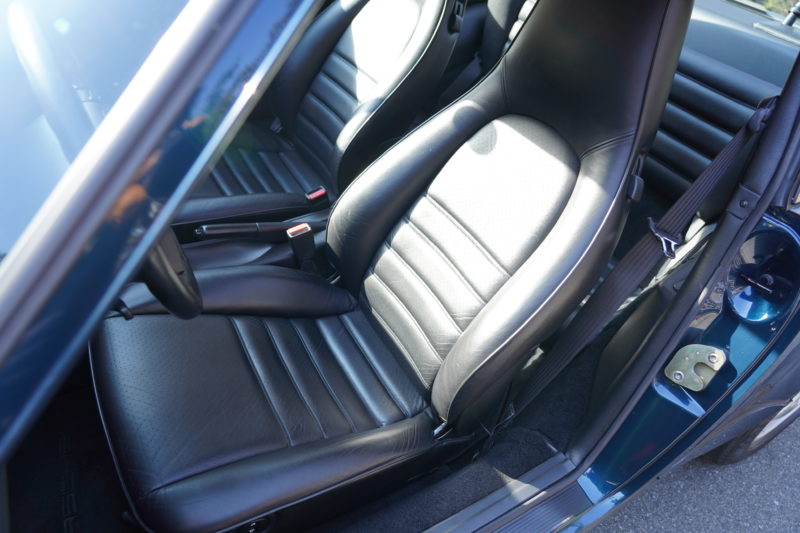
If you could measure precisely, I think “the shift timing is almost the same as a typical person shifting a manual,” or even “sometimes the Tiptronic is faster.” I’d often heard “Tiptronic shifts are slow” or “manual only,” but after driving it, I don’t think it’s that bad. In fact, poor manual shifting can cause more shift shock and be slower.
③ Acceleration and Speed
How about acceleration and speed? According to the specs, “0-100 km/h takes 5.7 seconds for the manual and 6.6 seconds for the Tiptronic,” about a one-second difference. However, in real-world mid-range acceleration from 100 to 120 km/h, the Tiptronic actually pulls ahead. According to a test in CG magazine at the time, “the manual took 2.2 seconds in 3rd gear (the fastest gear in this speed range), while the Tiptronic took 1.9 seconds.”
In actual city and highway acceleration, there’s no feeling of sluggishness. This is because the AT lock-up engages around 1100-1200 rpm and fully locks around 2000 rpm, so it stays almost fully locked during driving. This eliminates the slip and freewheeling sensation common in older torque converter automatics, giving you the acceleration you expect.
Manual or Tiptronic?
So, if asked “which is more fun, manual or Tiptronic?” the answer is clear: honestly, manual. Since I usually drive a Boxster with a manual, I can say that for sure.
The Tiptronic covers up to about 130 km/h in 2nd gear and about 195 km/h in 3rd gear. It’s great for enjoying the engine’s smooth acceleration, but the manual’s 2nd gear tops out around 110 km/h and 3rd around 160 km/h, so on Japanese roads, the manual lets you rev the engine more. Just looking at gear ratios, manuals often feel more “fun.”
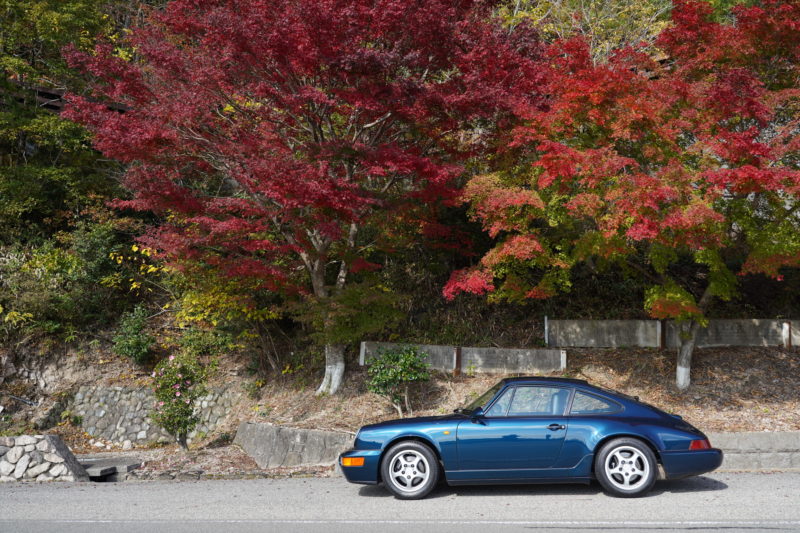
That said, this is just a comparison. It doesn’t mean the Tiptronic isn’t enjoyable. Cruising in D range, manually shifting through mountain roads, or driving on empty roads is thrilling in its own way. When you want to quickly and safely overtake, just floor the accelerator or downshift yourself.
Personally, I love holding 3rd gear and cruising on empty country roads. The gear ratios, throttle opening, and engine revs match perfectly, giving a direct connection between my right foot and the engine that’s pure pleasure. The engine neither over-revs nor under-revs, and driving through gentle curves and long straightaways with the air-cooled sound as background music makes me want to keep going forever.
If you’re wondering whether to choose Tiptronic or manual,
I’d recommend a manual if you want to push hard on circuits or mountain roads, but if your main use is daily driving or long touring, Tiptronic is perfectly fine.
Also, Tiptronic models are somewhat more common and affordable, and many are in relatively good condition, which is another plus.
==
That’s my husband’s report on the Tiptronic in the air-cooled 911 (964C2).
このブログが気に入ったらフォローしてね!


Comment ( 0 )
Trackbacks are closed.
No comments yet.